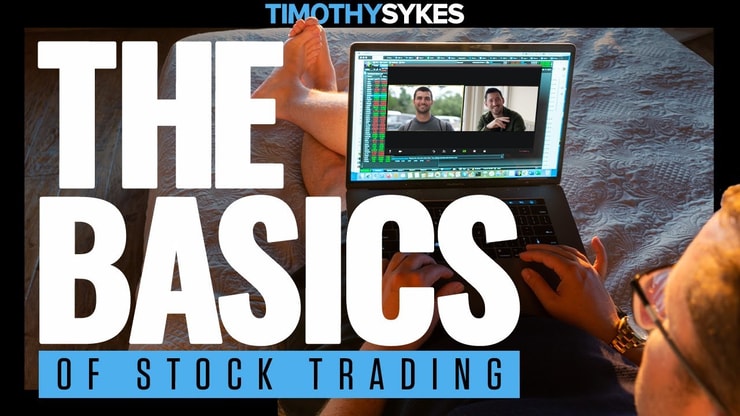Navigating the world of retirement planning can seem like a daunting task. It’s easy to get lost in a sea of investment accounts, strategies, and options. One tool that can help streamline your retirement planning is a Roth IRA account. Whether you’re just starting on your retirement journey or are a seasoned investor, it’s crucial to understand the benefits and features of a Roth IRA.
If you’ve landed on this page, you’ve already taken the first step towards securing your financial future. With so many Roth IRA accounts available, from traditional brokerage firms like Charles Schwab and Merrill Edge to robo-advisors like Betterment and Wealthfront, it’s essential to make an informed choice that aligns with your retirement goals and risk tolerance. This article will guide you through understanding what a Roth IRA is, who can open one, the different types of Roth IRAs, and the top Roth IRA accounts for 2023.
Retirement planning isn’t a one-size-fits-all strategy. It’s about crafting a plan that suits your individual needs and financial situation. Let’s get to the content!
Table of Contents
What is a Roth IRA Account?

A Roth IRA is a type of retirement account that offers a significant tax advantage—tax-free growth and tax-free withdrawals in retirement. You fund a Roth IRA with after-tax dollars, meaning you’ve already paid taxes on the money you put into the account. While there’s no immediate tax benefit, the upside is that your investments grow tax-free, and you won’t owe any taxes when you withdraw funds in retirement.
A Roth IRA is a powerful tool for retirement savings, offering tax-free growth and withdrawals. However, it’s just one of many types of retirement accounts available. Each type of account has its own advantages and disadvantages, and the best choice depends on your individual circumstances and goals.
To explore other types of retirement accounts, check out this guide on the Best IRA Accounts.
The Unique Benefits and Features of a Roth IRA
One of the key features that sets a Roth IRA apart from traditional retirement accounts is its tax structure. Unlike traditional IRAs or 401(k)s, where you get a tax deduction for contributions now but owe taxes when you retire, a Roth IRA flips the script. You pay the taxes up front, so your future self can enjoy tax-free withdrawals.
This tax structure offers flexibility, which can be a boon if you expect to be in a higher tax bracket in retirement. Plus, unlike traditional IRAs, there are no required minimum distributions (RMDs) with a Roth IRA. That means you can leave your money in the account to continue growing tax-free, even past retirement age, a feature that’s particularly useful for estate planning purposes.
Understanding How a Roth IRA Grows Over Time
Investing in a Roth IRA is like planting a seed that grows into a tax-free money tree. You contribute post-tax dollars today, which then grow through compounding interest. Over time, this can lead to significant tax-free earnings, especially if you start contributing at a younger age.
Remember, the growth in your Roth IRA isn’t just from the money you contribute. It’s also from the earnings on your contributions—interest, dividends, and capital gains. These earnings compound over time, meaning you’re earning returns not just on your original contributions, but also on the returns those contributions have already generated.
Who Can Open a Roth IRA?
Anyone with earned income can open a Roth IRA. This includes people of all ages, even children with earned income from a job. However, there are some limitations on who can contribute to a Roth IRA based on income.
More Breaking News
- What Powers QuantumScape’s Recent Surge and Market Position in EV Batteries?
- Canaan Inc.’s Stock Surges: What’s Driving the Momentum?
- Growth or Bubble? Unraveling the Rise of MARA Stock
Understanding Contribution Limits and Income Limitations
For 2023, the contribution limit for Roth IRAs is $6,000, or $7,000 if you’re age 50 or older. But keep in mind, these limits apply to all your IRA accounts combined. So if you also have a traditional IRA, your total contributions to both accounts can’t exceed these limits.
Income limitations apply too. The IRS sets income limits for Roth IRA contributions. If your income exceeds these limits, your contribution limit may be reduced, or you may not be eligible to contribute to a Roth IRA at all.
Determining Your Eligibility to Contribute to a Roth IRA
To determine if you’re eligible to contribute to a Roth IRA, you’ll need to look at your modified adjusted gross income (MAGI). For single filers in 2023, the ability to contribute to a Roth IRA begins to phase out at a MAGI of $129,000 and completely phases out at $144,000. For married couples filing jointly, the phase-out range is $204,000 to $214,000.
If your income exceeds these limits, you might consider a backdoor Roth IRA—a strategy where you contribute to a traditional IRA and then convert it to a Roth IRA. However, this strategy can be complex and may have tax implications, so it’s best to consult with a tax advisor.
Different Types of Roth IRAs

Not all Roth IRAs are created equal. Depending on your financial goals, risk tolerance, and investment strategy, one type of Roth IRA may be more suitable for you than another.
To make the most of them, you need to understand the difference between various types of accounts.
Let’s start with the basics — the difference between a margin account and a cash account. If you don’t know how each works, read this guide on Margin Account vs Cash Account. It will help you understand the pros and cons of each and make an informed decision.
Traditional Roth IRA Accounts
A traditional Roth IRA is a retirement account you open on your own, independent of your employer. This account type offers the most flexibility in terms of investment choices. You can invest in a variety of assets, including individual stocks, bonds, ETFs, index funds, and even futures or cryptocurrency, depending on the brokerage.
Rollover Roth IRAs
A rollover Roth IRA is an account that receives funds from another retirement account, such as a 401(k) from a previous employer. Rolling over into a Roth IRA might make sense if you want to consolidate your retirement savings, gain access to more investment options, or if you expect to be in a higher tax bracket in retirement.
Distinguishing Roth IRAs from Other IRAs: SEP and SIMPLE
SEP (Simplified Employee Pension) IRAs and SIMPLE (Savings Incentive Match Plan for Employees) IRAs are types of retirement accounts designed for small business owners and self-employed individuals. While these accounts offer higher contribution limits than a Roth IRA, they’re funded with pre-tax dollars and do not offer tax-free withdrawals in retirement.
Factors to Consider When Choosing the Best Roth IRA Account

Choosing the right Roth IRA account can be a daunting task, with so many brokerages and robo-advisors offering these accounts. Here’s what you should consider to help you make an informed choice.
Assessing the Range of Investment Options: Individual Stocks, ETFs, Mutual Funds, and More
The best Roth IRA for you will offer a wide range of investment options that align with your investment strategy. Some Roth IRA accounts will let you invest in individual stocks, bonds, ETFs, mutual funds, and more. Others may limit your investment choices, especially robo-advisors, which typically build your portfolio for you based on your risk tolerance and investment goals.
Considering the Use of a Roth IRA as an Emergency Fund
One unique feature of Roth IRAs is that you can withdraw your contributions (but not earnings) at any time, for any reason, without penalty. This makes a Roth IRA a potential option for an emergency fund. However, it’s important to remember that the primary purpose of a Roth IRA is for retirement savings, so this should not be its primary use.
Best Roth IRA Accounts for 2023: Overviews and Comparisons

Choosing the right Roth IRA account is a crucial step towards securing your financial future. But if you’re new to investing, it can be overwhelming. There are so many options out there, and each one has its own set of features and benefits.
To help you navigate this complex landscape, here’s a guide on the Best Stock Brokers for Beginners. It will help you understand what to look for in a broker and how to choose the one that’s right for you.
Now let’s dive into the top picks for the best Roth IRA accounts for 2023. Each of these accounts brings something unique to the table. As always, your choice should align with your retirement goals and investing style.
Charles Schwab Roth IRA
Charles Schwab is a tried-and-true choice for a Roth IRA account. It offers a broad range of investment options, including individual stocks, bonds, ETFs, and mutual funds. Plus, they provide excellent research tools and customer service, making it a solid choice for both beginners and experienced investors. They also offer no account minimums and low fees, making it an affordable choice.
Merrill Edge Roth IRA
Merrill Edge, backed by the reputable Bank of America, offers a great mix of robust research tools, a wide range of investment options, and solid customer service. One of the major advantages of choosing Merrill Edge is the seamless integration with Bank of America accounts, making it easy to manage your finances all in one place.
Bank of America Roth IRA
Bank of America offers Roth IRA accounts that cater to various types of investors, from those who prefer hands-on investment management to those who’d rather leave it to the experts. Their robo-advisor service, Merrill Guided Investing, is a standout for its affordable pricing and the potential for discounted advisory fees for Bank of America customers.
Wealthfront Roth IRA
Wealthfront is one of the top robo-advisors in the industry and is an excellent choice for those who prefer a hands-off investment approach. Their Roth IRA offers features like automatic rebalancing and tax-loss harvesting. However, keep in mind that robo-advisors limit your investment options, as they create the portfolio for you based on your risk tolerance and goals.
Betterment Roth IRA
Betterment is another leading robo-advisor offering Roth IRA accounts. It stands out for its goal-oriented tools and features, making it easy for you to see whether you’re on track to reach your retirement goals. Betterment also offers tax-efficient investing features and automatic portfolio rebalancing.
Understanding the Difference Between a Roth IRA and a 401(k)
While both Roth IRAs and 401(k)s are tools for retirement savings, they differ in several key aspects. A 401(k) is an employer-sponsored plan, meaning you can only contribute to a 401(k) if your employer offers one. On the other hand, anyone with earned income can open a Roth IRA.
One of the biggest differences is the tax structure. Roth IRAs are funded with after-tax dollars, and your contributions grow tax-free. On the other hand, 401(k)s are typically funded with pre-tax dollars, meaning you get a tax deduction now but will owe taxes when you start taking distributions in retirement.
Another difference is the contribution limit. For 2023, the maximum you can contribute to a Roth IRA is $6,000 ($7,000 if you’re 50 or older), while the limit for a 401(k) is significantly higher at $20,500 ($27,000 if you’re 50 or older).
Key Takeaways

Roth IRAs are a powerful tool for retirement savings, offering tax-free growth and tax-free withdrawals in retirement. They’re an excellent choice for many investors, especially those who anticipate being in a higher tax bracket in retirement.
Choosing the right Roth IRA account comes down to understanding your retirement goals, risk tolerance, and investment style. Whether you choose a traditional brokerage like Charles Schwab/TD Ameritrade or a robo-advisor like Wealthfront or Sofi, the important thing is to start saving for retirement as early as possible.
Time is the greatest ally of the investor. The earlier you start contributing to a Roth IRA, the more time your investments have to grow, and thanks to compounding interest, that growth can be substantial.
Even if you’re not in the market for a Roth IRA now, learning this information and the investment strategies, trading platforms, and retirement planning tools you need for doing the best IRA analysis is a good investment. Research and learning investment methodology are requirements—and those are my biggest recommendations.
I’ve built my Trading Challenge to pass on the things I had to learn for myself. It’s the kind of community that I wish I had when I was starting out.
We don’t accept everyone. If you’re ready to work hard, I want to hear from you.
Apply to the Trading Challenge here.
Do you invest in a Roth IRA? Let me know in the comments—I love hearing from my readers!



Leave a reply